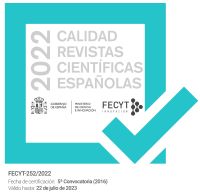The Concepts of Inheritance and Hereditary Variation
DOI:
https://doi.org/10.5944/endoxa.46.2020.27588Keywords:
Hereditary Variations, Inheritance, Natural Selection, Reproduction.Abstract
The idea of extended inheritance has become a leitmotif of what has been called 'extended synthesis'. This idea, meanwhile, leads to ignoring one of the distinctive marks of what has been classically understood as hereditary transmission: its close association with the process of reproduction. Without considering such an association, the notion of inheritance, rather than being extended, in fact, dissolves; and accepting such a dissolution would bring too many difficulties for the discourse of biological sciences. One of these difficulties has to do with the concept of 'hereditary variation'. With the dissolution of the notion of inheritance, this concept would also dissolve; and, without it, the Theory of Natural Selection would become unreliable. But, as there are no valid reasons to accept such a theoretical cost, here I want to show that both concepts, that of inheritance and that of hereditary variation, may and should be elucidated without accepting the idea of extended inheritance.
Downloads
References
AMORIN, Dalton (1997). Elementos Básicos de Sistemática Filogenética. Ribeirão Preto: Holos.
CAPONI, Gustavo 2017a. “Sobreestimación epistemológica de la construcción de nicho”. Metatheoria Vol. 8/1, pp. 129-144.
— (2017b). “Del efecto Baldwin al efecto Huxley”. Revista Colombiana de Filosofía de la Ciencia Vol. 34, pp. 7-40.
— (2017c) “El correlato ecológico del semaforonte”. Ludus Vitalis Vol. 48, pp. 1-28.
CARDELLINO, Ricardo & ROVIRA, Jaime (1987). Mejoramiento Genético Animal. Montevideo: Hemisferio Sur.
DAWKINS, Richard (1993). El gen egoísta. Barcelona: Salvat
— (1996). The blind watchmaker. London: Norton.
DIOGO, Rui (2017). Evolution driven by organismical behavior. Cham: Springer.
FELDMAN, Marcus (1992). “Heritability”, en Fox-Keller, Evelyn & Lloyd, Elisabeth (eds.) Keywords in Evolutionary Biology. Cambridge: Harvard University Press, pp. 151-158.
FOX-KELLER, Evelyn (2010). The mirage of a space between nature and nurture. London: Duke University Press.
FUTUYMA, Douglas (2005). Evolution. London: Sinauer.
GODFREY-SMITH, Peter (2009). Darwinian population and natural selection. Oxford: Oxford University Press.
LALAND, Kevin; ULLER, Tobias; FELDMAN, Marcus; STERELNY, Kim; MÜLLER, Gerd; MOCZEK, Armin; JABLONKA, Eva; ODLING-SMEE, John (2015). “The extended evolutionary synthesis: its structure, assumptions and predictions”. Proceedings of the Royal Society B Vol. 282, pp. 1-14.
LEWONTIN, Richard (2000). The triple helix. Cambridge: Harvard University Press.
MATURANA, Humberto & VARELA, Francisco (1994). De máquinas y seres vivos. Santiago: Universitaria.
MERLIN, Francesca (2014). “L’hérédité au-delá du tout genétique: problèmes et enjeux”. En Merlin, Francesca & Hoquet, Thierry (eds.), Précis de Philosophie de la Biologie. Paris: Vuibert, pp. 237-250
— (2017). “Limited extended inheritance”. En Huneman, Philippe & Walsh, Denis (eds.), Challenges in evolutionary theory. Oxford: Oxford University Press, pp.285-301.
MORANGE, Michel (2001). The misunderstood gene. Cambridge: Harvard University Press.
NOBLE, Denis; JABLONKA, Eva; JOYNER, Michael; MÜLLER, Gerd; OMHOLT, Stig (2014). “Evolution evolves”. Journal of Physiology Vol. 592/11, pp. 2237-2244.
ODLING-SMEE, John (2010). “Niche inheritance”. PIGLIUCCI, Massimo & MÜLLER, Gerd (eds.): Evolution: the extended synthesis. Cambridge: MIT Press, pp. 175-208.
OYAMA, Susan (1985). The ontogeny of information: developmental systems and evolution. Cambridge: Cambridge University Press.
ROSE, Hilary & ROSE, Steven (2019). Genes, células y cerebros. Buenos Aires: IPS
STERELNY, Kim (2001). “Niche construction, developmental systems, and extended replicator”. En Oyama, Susan; Griffiths, Paul; Gray, Russell (eds.), Cycles of contingency: developmental systems and evolution. Cambridge: MIT Press, pp. 333-350.
Downloads
Published
How to Cite
Issue
Section
License

This work is licensed under a Creative Commons Attribution-NonCommercial-NoDerivatives 4.0 International License.







